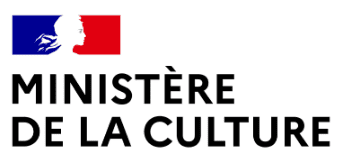In late August, Léna, 25, arrives in Arles to meet up with Marius from a past holiday romance. He’s late. Whilst waiting for him, she meets Maurice, a seasonal baker, who introduces her to his friend Ali, a nice guy who’s sometimes in Arles. Marius eventually turns up and all four of them bond over the chance encounter and spontaneous complicity, and meet up the following two summers in Normandy and then Ibiza. With light-hearted nonchalance, the film crystallises the magic of long summers in a sunny tableau with bright, shimmering colours, portraying the charm of footloose romance. The directors play around with the motifs of New Wave- inspired French cinema that enjoys recreating the variations of amorous banter. The conversations, interpreted by this quartet of jubilant actors, reveal youth caught between minor and major concerns – should they have children? Go out to sea? Follow love? Only Léna, navigating between the three boys, seems to know what she wants and where she’s going. Following in the wake of Jacques Rozier, Dying in Ibiza smells of sea air and salty spray. The sea, shot in its exquisite palette of blues from the English Channel to the Mediterranean, is omnipresent, a place of escapades, conquests and the promise of departure. While the film relies mainly on the authentic chatter and verve of its characters, speech gradually gives way to song. The trio of directors is anything but faint-hearted, going as far as capturing the energy of musicals to substitute the words with refrains that describe the emotions of journeys so well. Like Lena leaning against the rail of the ferry “that never stops not coming back”, to quote from a well-known French song, it’s with emotion and delight that we discover this promising work that’s gazing out to the horizon. (Louise Martin Papasian) Anton Balekdjian Léo Couture Mattéo Eustachon
- First Film Competition
- 2022
-
 First Film Competition
First Film Competition
- Audience Award - European Highschool Prize Vacances Bleues Foundation - Marseille Espérance Prize - SPECIAL MENTION | FIRST FILM PRIZE
- 2022
DYING IN IBIZA(A FILM IN THREE SUMMERS)
Anton Balekdjian, Léo Couture and Mattéo Eustachon
Léo Couture
Mattéo Eustachon
Interview with Anton Balekdjian, Léo Couture and Mattéo Eustachon
What was your project for Dying in Ibiza (A Film in Three Summers), your first film, the portrait of four young people looking for love and happiness?
It became a project for a feature film later. At first it was shorts shot over three summers from 2019 to 2021. In the beginning, we wanted to improvise with the people we wanted to film, explore a place and do it all as light-heartedly and collectively as possible. We wrote the first part in one night. We wanted to take up the A Summer’s Tale (Conte d’été) motif but subvert it with our preoccupations at the time and what made us laugh. The idea was that a young woman who came to have fun on holiday finds herself with repressed, frustrated boys. It’s a quest for collective tenderness where no-one dares express themselves. So, it causes a lot of awkwardness, misunderstandings and surprises. It makes a good playground and it corresponded to our relationships with others at the end of adolescence. We wanted to be on the same level as the characters, without passing comment.
What made you decide to continue after the first summer? How did you develop the script?
We never wrote the script of the feature, it happened the other way round. After we’d shot the section in Arles, we wanted to use the same characters again and we wondered, like in a great saga, how we could expand on their adventures by exploring their hidden sides. For each summer, we started off with a step outline that we developed while we were location scouting and then with the actors during the shoot. The script was constructed by interweaving the three stages.
Is the sea the common thread connecting the three parts?
We’ve never formulated it like that. It became the thread because the sea represents the promise of adventure, but also solitude, mysteries, arrivals and departures. It became the incarnation of all the topics we addressed.
What determined the choice of these three locations, the town of Arles, Étretat Beach and Ibiza?
They’re three iconic places that gave us a hunch that we could tell our stories there. Arles first of all because we had free accommodation there and we knew a few people but also because we felt we could shoot a warm, lively film there. We liked the picture-postcard aspect too, and the Roman architecture, the Camargue, etc. And how we’d be able to chip off the varnish to discover the characters’ lives. Étretat was the opposite – the seaside town, its cliffs, the drizzle, the whistling wind. A kind of mysticism. We wanted to do the reverse side of the first film, a strange moment that goes wrong. And the third had to be the grande finale, so you can’t get much better than Ibiza. An island where very different worlds rub shoulders – excessive wealth, mass tourism, locals, hippies… It was a rich fantasy and it was a challenge to go and ambush a shoot there.
The three of you directed Dying in Ibiza (A Film in Three Summers). How did you work together?
We did everything together, from scriptwriting to post production. And on the shoot, we were technicians and directors. Mattéo on camera, Léo on sound and Anton writing the last-minute dialogue and assisting, the script, etc. There was also Manon who was in charge of what was external to the set, between directing, production and management. When the actors weren’t acting, they helped us too. For the directing, we functioned like a three-headed beast, making sure we never ended up just agreeing for the sake of it.
How did you make up the cast with young actors and non-professionals?
The casting just happened without being planned. We offered the parts to people we wanted to see act and who we felt were motivated by the collective adventure. It was really important to mix actors and amateurs, even for the main characters, to get that fragility. All the secondary roles are people we met and wanted to play a part. Often, the roles were created at the last minute, when we were scouting or shooting.
In this ménage à quatre, Léna is the most determined while the men are more indecisive. How did you define their characters?
More or less consciously, we wanted to talk about a cowardice that we perceived in ourselves, an absurd pressure we inflicted on ourselves and that made us act weirdly or violently. A panicky fear of love that we nevertheless desperately want. Léna locks horns with the male characters stuck in this mindset. And a lot of the actors created their characters, like clown versions of themselves, by suggesting situations, names, costumes and so on.
The film is shot during the summer with a particular light. What choices did you make for the images? Were the directions different depending on the locations?
The choices for the images were dictated by light-heartedness, discretion and the extremely small budget. We shot in mini-DV, HD and 2K. We found that modernising the image went well with the passing of time. For each summer, we had a film we referred to for the energy of the camera movements. In Arles, it was The Things of Life, which is why some of it is with a tripod with pan shots and sequence shots and zooming in on the movement. For Étretat, it was Jim Jarmusch’s early films. For Ibiza, we imagined something more dynamic with movements for almost all the shots. Wild Reeds was our inspiration for that. The film was shot in natural light, without being able to choose the timing of the shoot (because we shot in chronological order). We had to shoot before the light changed and be very quick about finding the right angle so that the direction on the actors was right
The third summer is striking for its songs and sung sequences. Did you want to make a musical?
We wanted the feelings to be expressed loud and clear at last, so songs were the obvious choice. It meant we could finish with a bang, and explore an artificial genre, and ask new questions about directing. In fact, each summer was a way of giving shape to our cinematic desires that we’d talked about over the year.
How did you choose the music for each summer?
For Arles, a lot of it was to do with the sound of the places we turned up at. Like the feria or the festival in Camargue. We had very little influence over these choices, often because it was impossible but also because it was fun sensing the characters in the midst of a summer in the south, with its 1980s classics. Vivaldi was there when we wrote the script, for its Rohmeresque dimension. Étretat was during the first summer of Covid and that became obvious very quickly. No parties or discos, so the only music that remains is off-camera. Red Red Wine and the music that makes the connection with Ibiza, the variation of a song that Madga goes on to sing. For Ibiza, we wanted to shake up the compositions and try our hand at writing with complete adaptations. Even some of the tracks on-camera that they listen to are covers that are totally different from the original versions, like Allumer le feu to a reggae beat.
Interview by Olivier Pierre
-
 First Film Competition
First Film Competition
Technical sheet
France / 2022 / Colour / 110’
Original version : french, spanish
Subtitles : french
Script : Anton Balekdjian, Léo Couture, Mattéo Eustachon
Photography : Mattéo Eustachon
Editing : Juliette Alexandre
Son : Léo Couture.
Sound : Lucile Balézeaux, César Simonot, Mathis Sonzogni, Alex Caironi
Production : Antoine Salomé, Joséphine Mourlaque (Mabel Films).
Filmographie :
Anton Balekdjian : Les Vilains Petits Canards, 2020.
- Autres films / First Film Competition






